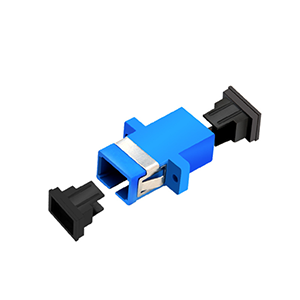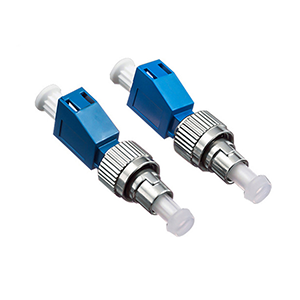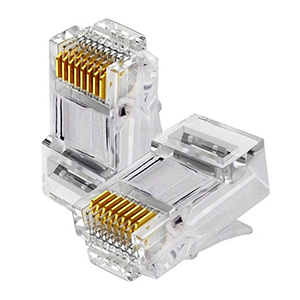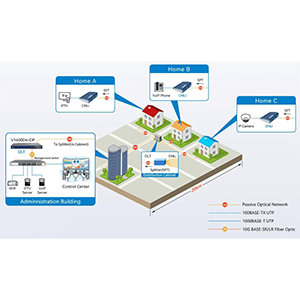The length of Ethernet cables will undoubtedly affect network performance. This article will explore the maximum transmission distance of CAT8 Ethernet cables. We will first outline the common Ethernet cable grades and their technical specifications, and analyze the differences in the maximum transmission distance of different cable grades. Next, we will introduce the physical structure and electrical parameters of CAT8 cables, and explain its advantages in bandwidth, anti-interference, etc.
We will explain the theoretical maximum transmission distance of CAT8 cables and analyze the key factors that affect its transmission distance. In addition, we will list common CAT8 cable application scenarios and explain its actual transmission distance according to different application environments. Finally, we will introduce the standard method for testing the transmission distance of CAT8 cables and describe the practical steps to verify its transmission performance.
Ethernet cable standards and characteristics
Let me give you a detailed introduction to the standards and characteristics of common Ethernet cables.
Common Ethernet cable grades and their technical indicators:
(1) Category 5e cable (Cat5e)
- Supports 1000Mbps (Gigabit Ethernet) transmission rate
- Bandwidth can reach 100MHz, and the maximum transmission distance is 100 meters
(2) Category 6 cable (Cat6)
- Supports 1000Mbps transmission rate
- Bandwidth can reach 250MHz, and the maximum transmission distance is 100 meters
(3) Category 6 enhanced cable (Cat6a)
- Supports 10Gbps (10 Gigabit Ethernet) transmission rate
- Bandwidth can reach 500MHz, and the transmission distance can reach up to 100 meters
(4) Category 7 cable (Cat7)
- Supports a transmission rate of 10Gbps
- Bandwidth can reach 600MHz, and the transmission distance can reach up to 100 meters
(5) Category 8 cable (Cat8)
- Supports a transmission rate of 40Gbps and 100Gbps
- Bandwidth can reach 2GHz, and the transmission distance can reach up to 30 meters
The maximum transmission distance difference between different cable grades:
(1) Category 5e cable (Cat5e)
- Maximum transmission distance is 100 meters
- Suitable for general Gigabit Ethernet applications
(2) Category 6 cable (Cat6)
- Maximum transmission distance is 100 meters
- Performance is slightly better than Cat5e, suitable for most Gigabit Ethernet scenarios
(3) Category 6 enhanced cable (Cat6a)
- Maximum transmission distance is 100 meters
- Supports higher frequency and bandwidth, suitable for 10GbE applications
(4) Category 7 cable (Cat7)
- The maximum transmission distance is 100 meters
- The performance is better than Cat6a, suitable for high-speed 10GbE network
(5) Category 8 cable (Cat8)
- The maximum transmission distance is 30 meters
- Supports 40/100GbE, used in high-speed interconnection scenarios such as data centers
It can be seen that with the improvement of cable grade, the maximum transmission distance remains at around 100 meters, but the supported rate and bandwidth have been greatly improved. Although the transmission distance of Category 8 cable is shorter, it can meet the needs of ultra-high-speed applications such as data centers.
Technical characteristics of CAT8 Ethernet cable
Let me introduce you to the technical characteristics of CAT8 Ethernet cable in detail.
CAT8 cable physical structure and electrical parameters:
(1) Physical structure
- CAT8 cable consists of 4 pairs of twisted pairs, each pair of wire cores consists of copper conductor and insulation layer.
- The outer layer of the cable is covered with a shielding layer of metal foil and braided layer to improve the anti-interference ability.
- The cable diameter is generally around 6-8mm, and the outer layer is PVC or other materials.
(2) Electrical parameters
- The characteristic impedance is 100Ω±15Ω, which meets the requirements of Ethernet standards.
- The near-end crosstalk (NEXT) loss and far-end crosstalk (FEXT) loss are low.
- The DC resistance is less than 9.38Ω/100m, which meets the CAT8 standard.
- The operating voltage does not exceed 100V, and the withstand voltage performance is good.
(3) Transmission performance
- Supports ultra-high-speed Ethernet transmission protocols such as 40/100GbE.
- The maximum transmission bandwidth can reach 2GHz, meeting the needs of high-speed applications.
- The maximum transmission distance is 30 meters, suitable for scenarios such as data centers.
The advantages of CAT8 cable in bandwidth, anti-interference, etc.:
(1) Ultra-high bandwidth
- The transmission bandwidth of CAT8 cable can reach 2GHz, which is 4 times the previous standard.
- It can support ultra-high-speed Ethernet applications such as 40/100GbE to meet future needs.
(2) Strong anti-interference ability
- CAT8 cable adopts a comprehensive shielding design, which can effectively isolate external electromagnetic interference.
- It can still ensure the integrity and reliability of signal transmission in a strong interference environment.
(3) Transmission distance optimization
- The maximum transmission distance of CAT8 cable is 30 meters, which is slightly shorter than 100 meters.
- But for high-speed Ethernet applications, this distance is enough to meet the needs.
(4) Low loss characteristics
- CAT8 cable adopts high-quality conductor materials and insulation design, and has low signal loss.
- It is conducive to reducing the power consumption of device ports and intermediate connection points.
(5) High integration
- CAT8 cable adopts a more compact design, which helps to increase the port density of equipment.
- It is conducive to the space utilization of computer room wiring management and network equipment.
In short, CAT8 Ethernet cable has significantly improved bandwidth, anti-interference, transmission distance and other aspects through technological innovation, and is very suitable for high-speed Ethernet applications.
Maximum transmission distance of CAT8 Ethernet cable
Let me introduce the maximum transmission distance of CAT8 Ethernet cable and its influencing factors in detail.
Theoretical maximum transmission distance of CAT8 cable:
According to the technical specifications of CAT8 standard, the maximum transmission distance of CAT8 cable is 30 meters. This transmission distance is based on the following considerations:
(1) Bandwidth requirements
- CAT8 cables support ultra-high-speed Ethernet standards such as 40/100GbE.
- In order to ensure the reliable transmission of these high-speed protocols within a distance of 30 meters, 30 meters is determined as the maximum distance.
(2) Signal quality
- Within 30 meters, CAT8 cables can ensure signal quality and meet the requirements of low bit error rate and low latency.
- After exceeding 30 meters, the signal quality will drop significantly and cannot meet the technical indicators of high-speed Ethernet.
(3) Electrical characteristics
- The electrical characteristics of CAT8 cables, such as characteristic impedance, crosstalk and other indicators, can be well controlled within 30 meters.
- These performance indicators will be affected after exceeding the distance, and it is difficult to meet the standard requirements.
Key factors affecting the transmission distance of CAT8 cables:
(1) Cable quality
- The conductor material, insulation performance, shielding design, etc. of the cable will affect the transmission distance.
- High-quality CAT8 cables can ensure better transmission performance within 30 meters.
(2) Installation process
- Installation details such as cable connector manufacturing and bending radius will affect the transmission quality.
- Professional installation process is critical to maximizing the transmission distance.
(3) Environmental conditions
- Environmental factors such as temperature, humidity, and electromagnetic interference will affect cable performance.
- Harsh environments can shorten the cable transmission distance, and may even fail to reach 30 meters.
(4) Termination equipment
- The performance of the network equipment connected to the CAT8 cable will also affect the overall transmission distance.
- If the device interface performance is poor, it will also limit the maximum transmission range of the cable.
In short, the quality of the CAT8 cable itself, the installation process, the use environment and the connection equipment are all key factors affecting its maximum transmission distance, and need to be considered comprehensively.
The transmission distance of CAT8 cable in actual application
Let me introduce you to the transmission distance of CAT8 Ethernet cable in actual application.
Common application scenarios of CAT8 cable:
(1) Data center
- Data center is the main application field of CAT8 cable.
- Used for interconnection between high-speed Ethernet switches, servers and storage devices such as 40/100GbE.
(2) High Performance Computing
- In HPC (High Performance Computing) clusters, CAT8 cables are used for high-speed interconnection between nodes.
- Meet the stringent requirements of supercomputing systems for bandwidth and low latency.
(3) Broadcasting and Television
- The broadcasting and television industry has high standards for network transmission quality.
- CAT8 cables can provide reliable transmission channels for high-definition media such as 4K/8K video.
(4) Industrial Automation
- Industrial sites have strict requirements for network performance and anti-interference capabilities.
- The excellent performance of CAT8 cable can meet the needs of industrial control systems.
(5) Military and Aviation
- The defense and aviation fields have extremely high standards for network information security and reliability.
- The excellent characteristics of CAT8 cable can meet the needs of such special application scenarios.
The actual transmission distance of CAT8 cable in different application environments:
(1) Data Center
- In the data center environment, CAT8 cable can fully utilize the maximum transmission distance of 30 meters.
- Dense deployment in the computer room, the connection distance generally does not exceed 30 meters.
(2) High Performance Computing
- The interconnection distance between HPC cluster nodes is usually within 30 meters.
- CAT8 cables can reliably support high-speed data exchange within the cluster.
(3) Broadcasting and Television
- In broadcasting and television systems, the transmission distance of CAT8 cables is usually between 10 and 20 meters.
- Short-distance transmission helps reduce signal quality loss.
(4) Industrial Automation
- The transmission distance of CAT8 cables on factory sites is mostly within 20 meters.
- Considering the electromagnetic interference in the industrial environment, appropriately shortening the transmission distance can improve reliability.
(5) Military and Aviation
- For special military and aviation applications, the actual transmission distance of CAT8 cables is usually no more than 20 meters.
- Ensure stable and reliable data transmission even in harsh environments.
In short, in actual applications, the transmission distance of CAT8 cables varies depending on the scenario, usually within the range of 10-30 meters, which can meet the needs of various high-speed Ethernet applications.
Testing the transmission distance of CAT8 cables
Let me introduce to you how to test and verify the transmission distance of CAT8 cables.
Standard method for testing the transmission distance of CAT8 cables:
Testing the transmission distance of CAT8 cables mainly follows the following standards:
(1) TIA/EIA-568-C.2 Standard
- This standard specifies detailed methods for testing the transmission performance of CAT8 cables.
- Including measuring characteristic impedance, transmission loss, crosstalk and other indicators.
(2) IEC 61935-1 Standard
- Test standards developed by the International Electrotechnical Commission, applicable to CAT8 cables.
- Test items cover parameters such as transmission rate and signal distortion.
(3) IEEE 802.3bq Standard
- One of the IEEE Ethernet standards, specifies the test requirements for 40/100GbE cables.
- Can be directly used to evaluate the transmission performance of CAT8 cables in high-speed Ethernet applications.
Actual steps to verify the transmission performance of CAT8 cable:
(1) Test preparation
- Prepare a professional cable tester, such as Fluke DSX-8000.
- Ensure that the test environment temperature, humidity, electromagnetic interference and other conditions meet the standard requirements.
(2) Connection test
- Connect both ends of the CAT8 cable to the ports of the tester.
- Ensure that the connection is firm to avoid problems such as poor contact.
(3) Parameter measurement
- The tester automatically performs a comprehensive test on the cable, including transmission rate, loss, crosstalk, etc.
- Record the test results of each indicator and compare them with the standard requirements.
(4) Distance test
- The actual transmission distance of the cable can be checked through the display interface of the tester.
- Ensure that the transmission distance is within 30 meters and meets the requirements of the CAT8 standard.
(5) Test report
- Organize the test results into a report, including test methods, conditions and data analysis.
- The report can be used to evaluate the quality of the cable and serve as the basis for cable acceptance.
(6) Continuous monitoring
- Regularly test and monitor the deployed CAT8 cables.
- Discover and solve possible transmission quality problems in a timely manner.
In short, through standardized testing methods and strict verification steps, the transmission performance of CAT8 cables in actual applications can be fully evaluated.
Summary
It is crucial to rationally select CAT8 Ethernet cables suitable for network infrastructure. Our company has long focused on the research and development and production of network equipment and its supporting products, and has rich industry experience. Our CAT8 cable products have reached the industry-leading level in terms of transmission rate, cable length, etc., and can meet your demanding needs for high-speed network construction.
Whether you need to deploy CAT8 cables in data centers, enterprise networks, or industrial automation scenarios, we can provide you with customized solutions. At the same time, our professional team will provide you with a full range of technical support, including on-site surveys, solution design, and installation and commissioning guidance. Contact us now to learn more about CAT8 Ethernet cables.
CAT8 Cable FAQ
According to the TIA/EIA-568.2-D standard, the maximum length for a Cat8 Ethernet cable is 30 meters (approximately 98 feet).
The length limitation is primarily due to the high-frequency signal requirements and signal integrity considerations of the Cat8 specification, which operates at up to 40 Gigabit Ethernet speeds.
While it is possible to use Cat8 cables for longer runs, extending beyond the 30-meter limit may result in degraded performance, higher attenuation, and potential issues with signal integrity.
The key factors include cable quality, installation practices, environmental conditions, and the specific networking equipment and applications being used.
Cat8 has a shorter maximum length compared to lower-speed categories like Cat5e (100 meters) and Cat6 (100 meters), which are designed for longer-reach applications.
Options include using active Ethernet extenders, media converters, or considering alternative high-speed cabling technologies, such as fiber optics, for longer-distance connections.
Exceeding the maximum length can lead to signal degradation, increased noise, and potential connectivity issues, compromising the overall network performance.
Industry standards and guidelines, such as TIA-568.2-D, provide recommendations for proper installation, termination, and testing of Cat8 cabling to ensure optimal performance.
Specialized cable testing equipment, such as time-domain reflectometers (TDRs), can be used to accurately measure the length of a Cat8 Ethernet cable run.
Emerging technologies, such as 400 Gigabit Ethernet (400GbE), are driving the development of even higher-speed cabling standards, which may have different length limitations and performance characteristics.





